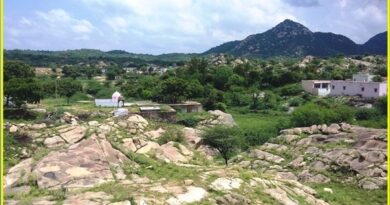Guardian of the Maratha Legacy: Shaniwar Wada Fort
Shaniwar Wada Fort
Shaniwar Wada is indeed a fascinating historical site located in Pune, Maharashtra, India. It was built in the 18th century by the Peshwa rulers of the Maratha Empire. The construction of the fort began in 1730 and was completed in 1732. Shaniwar Wada holds significant historical importance as it was the seat of the Peshwa rulers during their reign. The fort was known for its grandeur and architectural beauty, featuring intricate designs and a blend of Maratha, Mughal, and Persian architectural styles.
One of the most intriguing aspects of the Shaniwar Wada fort is its rich history and associated legends, including tales of supernatural occurrences and tragic events. The fort also played a crucial role in the politics and power struggles of the Maratha Empire during the 18th century.
Today, Shaniwar Wada Fort is a prominent tourist attraction in Pune, drawing visitors from all over the world who come to admire its historical significance and architectural splendor. Tourists can explore the various sections of the fort, including the massive walls, gates, courtyards, and the remnants of its once-opulent interiors. Additionally, sound and light shows are often organized to narrate the history of the fort and bring its stories to life for visitors.
1. Shaniwar Wada Fort Haunted Story
The story of the haunted Shaniwar Wada fort is one of the most famous tales associated with this historical site. According to legend, the ghost of a young prince named Narayan haunts the fort premises. The story goes back to the 18th century when Narayan, the young son of Peshwa Bajirao I, was brutally murdered within the fort’s walls. It is said that on a full moon night, Narayan, who was just a boy, was playing hide-and-seek with his friends within the fort. Suddenly, he was attacked and brutally killed by unknown assailants. His cries for help echoed through the fort, but nobody could save him in time.
Since then, it is believed that the spirit of Narayan haunts the Shaniwar Wada fort. Locals and visitors claim to have heard his cries for help echoing in the night, especially on full moon nights. Some even claim to have seen the silhouette of a young boy running through the corridors of the fort, disappearing into thin air.
While there is no concrete evidence to support the existence of ghosts or supernatural occurrences, the haunted tale of Shaniwar Wada adds an extra layer of intrigue and mystery to this already fascinating historical site. It has become a popular subject of folklore and attracts ghost enthusiasts and thrill-seekers who wish to experience the eerie atmosphere of the fort firsthand.

2. Maratha Empire
The Maratha Empire was one of the most significant powers in the Indian subcontinent during the 17th and 18th centuries. It emerged as a formidable force amidst the decline of the Mughal Empire, primarily in the region known as the Deccan Plateau, which comprises parts of modern-day Maharashtra, Karnataka, Madhya Pradesh, and Gujarat.
The rise of the Marathas can be traced back to the leadership of Shivaji Bhonsle, also known as Chhatrapati Shivaji Maharaj, who established the Maratha Kingdom in the late 17th century. Shivaji was a skilled military leader and strategist who successfully challenged the authority of the Mughals and other regional powers. He laid the foundation for a Maratha resurgence, characterized by guerrilla warfare tactics and establishing a strong administrative system.
Also read- The Mystique of Pataleshwar Cave Temple, Pune
After Shivaji died in 1680, his successors, particularly the Peshwas, further expanded the Maratha Empire’s territory and influence. The Peshwas were prime ministers who wielded significant power on behalf of the Maratha rulers. Under the leadership of influential Peshwas like Balaji Vishwanath, Baji Rao I, and others, the Marathas expanded their control over vast territories in India.
The Maratha Empire reached its zenith under the reign of Peshwa Baji Rao I, who is renowned for his military campaigns and administrative reforms. Baji Rao I’s victories in the north and central regions of India extended Maratha’s dominance over a large part of the subcontinent. However, the empire faced challenges from rival powers, including the Mughals, the British East India Company, and various regional kingdoms.
The decline of the Maratha Empire began in the late 18th century due to internal conflicts, succession disputes, and external pressure from the British. The Marathas suffered significant losses in battles such as the Third Battle of Panipat in 1761, which weakened their military prowess. Eventually, the Marathas were subdued by the British East India Company through a series of conflicts known as the Anglo-Maratha Wars, leading to the dissolution of the empire and the establishment of British colonial rule over India. Despite its eventual decline, the Maratha Empire left a lasting legacy in Indian history, shaping political, cultural, and social dynamics in the subcontinent.
3. Peshwa Rulers
The Peshwas were prime ministers or chief ministers of the Maratha Empire, who served as the de facto leaders of the state during the rule of the Maratha kings. The term “Peshwa” is derived from the Persian word “Peshawar,” which means “foremost” or “leader.” The position of the Peshwa emerged as a powerful institution within the Maratha administration, particularly during the 18th century.
The role of the Peshwa evolved, but generally, they held significant political, administrative, and military authority. Initially, the Peshwas served as the principal military commanders and advisors to the Maratha kings, assisting them in matters of governance, defense, and diplomacy. However, as the power of the Maratha kings declined, especially after the reign of Shivaji Maharaj, the Peshwas gained greater autonomy and control over the empire’s affairs.
One of the most influential Peshwas in Maratha history was Balaji Vishwanath, who served as the first hereditary Peshwa from 1713 to 1720. Balaji Vishwanath consolidated the power of the Peshwa office and laid the foundation for its prominence in Maratha politics. His successors, particularly Baji Rao I and his descendants, further expanded the authority and influence of the Peshwas.
Baji Rao I, who served as Peshwa from 1720 to 1740, was a renowned military strategist and administrator. Under his leadership, the Maratha Empire experienced significant territorial expansion and military successes. Baji Rao I’s campaigns extended Maratha’s control over large parts of central and northern India.
Following Baji Rao I, subsequent Peshwas continued to play crucial roles in Maratha politics and military affairs. However, internal conflicts, succession disputes, and external pressures from rival powers, notably the British East India Company, contributed to the decline of the Maratha Empire and the weakening of the Peshwa authority.
The reign of the last Peshwa, Baji Rao II, marked the end of the Maratha Confederacy’s political dominance. The British East India Company defeated the Marathas in a series of conflicts known as the Anglo-Maratha Wars, leading to the dissolution of the Maratha Empire and the downfall of the Peshwa rule. Baji Rao II was exiled, and the British established direct control over much of India, effectively ending the era of the Peshwas.
4. How to Reach Shaniwar Wada Fort
Pune has its own airport, the Pune International Airport, which is well-connected to major cities across India. From the airport, you can hire a taxi or use ride-hailing services to reach Shaniwar Wada, which is located in the heart of the city. Pune is a major railway junction, with regular trains connecting it to various cities across the country. Pune Junction is the main railway station. Once you arrive at Pune Junction, you can take a taxi, auto-rickshaw, or bus to Shaniwar Wada, which is located approximately 3-4 kilometers away.
Pune has a well-developed bus network operated by the Pune Mahanagar Parivahan Mahamandal Limited (PMPML). You can take a bus to the Pune Municipal Corporation (PMC) bus stand, which is close to Shaniwar Wada. From there, it’s a short walk or a quick ride by auto-rickshaw to reach the fort. If you’re traveling by car, you can use GPS navigation to reach Shaniwar Wada. The fort is located in the heart of Pune city, so it’s easily accessible by road. There are parking facilities available near the fort for visitors.



